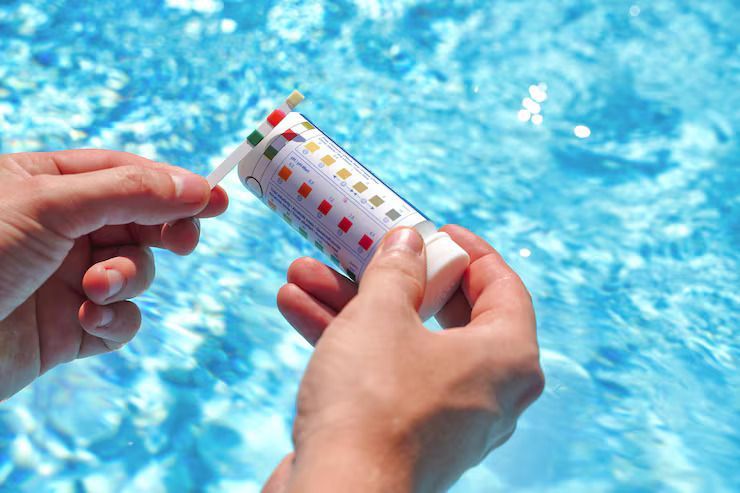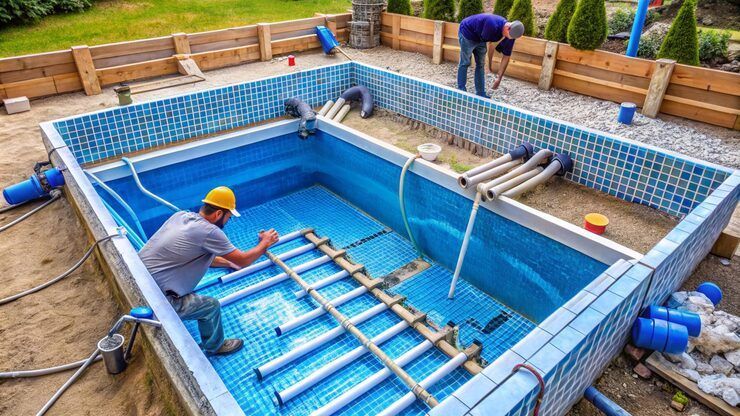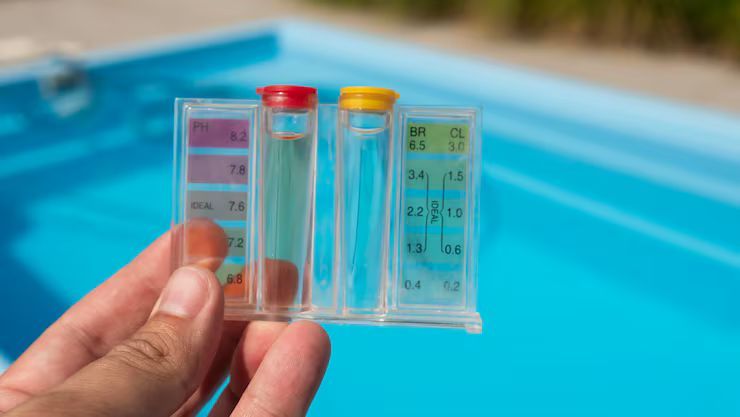Vinyl Pool Liners vs. Fiberglass Pools: A Clear Comparison
Table of Contents
Key Takeaways
✔ A pool liner is a vinyl layer that prevents leaks and creates a smooth surface.
✔ Vinyl offers full shape flexibility; fiberglass is size-limited.
✔ Fiberglass installs faster than vinyl liner pools.
✔ Both vinyl and fiberglass pools have smooth, skin-friendly surfaces.
✔ Fiberglass lasts longer with fewer replacements.
✔ Vinyl needs more upkeep than fiberglass.
✔ Fiberglass resists algae better than vinyl.
✔ Fiberglass uses fewer chemicals and saves energy.
✔ Vinyl costs less upfront; fiberglass saves more over time
Selecting the right type of pool is a big decision for any homeowner—and with swimming pools potentially increasing home value by up to 7%, it’s a choice worth careful consideration. Vinyl pool liners and fiberglass pools are two top contenders, each with their own strengths in cost, durability, installation, and design.
Here’s a clear comparison between durable and long-lasting vinyl liners and fiberglass pool options to help you make an informed choice.
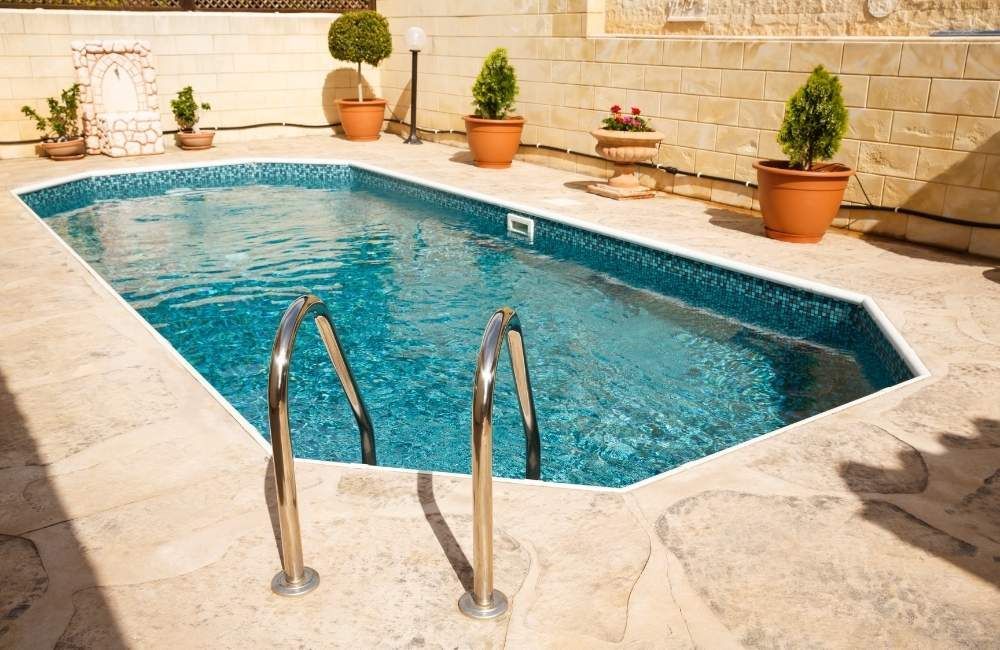
What Is a Swimming Pool Liner?
A swimming pool liner is a custom-fit layer made from fused vinyl sheets, designed to cover the floor and walls of a pool. While available in many colors and patterns for decorative appeal, its main job is to create a smooth surface and prevent water leaks.
Liners help protect swimmers from scrapes and shield the pool structure from damage. Whether for above-ground or inground pools, a high-quality vinyl liner is key to both function and style.
Vinyl Pool Liners vs. Fiberglass Pools: Which is Best?
Vinyl pool liners and fiberglass pools are two of the most popular choices, each with its own strengths. Here’s a breakdown of how they compare so you can make the best choice for your backyard.
1. Customization
Choosing a pool isn’t just about price or installation time—it’s also about how well it fits your space, style, and needs. Both fiberglass and vinyl liner pools offer customization options, but they vary in flexibility and design possibilities.
Fiberglass Pools: Limited Shapes, Built-In Features
Fiberglass pools are made from factory-molded shells. These pools are shipped pre-formed, which limits certain aspects of customization but offers other built-in advantages.
- Pre-Made Molds Only: Fiberglass pools are limited to standard sizes—usually no wider than 16 feet, 40 feet long, and 8.5 feet deep. This makes them ideal for quick installations but less flexible for uniquely shaped spaces.
- Built-In Features Included: Many fiberglass pool models come with integrated amenities like tanning ledges, benches, and seating areas. These are built into the mold and included at no extra charge.
- Add-On Enhancements Available: Homeowners can still personalize their fiberglass pool with optional upgrades such as LED lighting, water features, tile accents, and therapy jets to enhance the overall look and feel.
Vinyl Pool Liners: Designed for Flexibility
Vinyl liner pools offer nearly unlimited customization options. Their structure is built on-site, and the liner is cut to fit the exact shape and dimensions the homeowner chooses. This makes them ideal for those seeking more personalized design elements.
- Flexible Sizing and Shape Options: With custom vinyl pool liner installation, homeowners can choose from traditional rectangular layouts or opt for completely unique shapes, curves, and depths to suit their space and style.
- Fully Tailored Features: Additions like tanning ledges, specialty steps, and unique seating configurations can be integrated into the pool’s design. These are custom-built during the construction process and made to match the liner's form.
- Design Variety: High-quality vinyl pool liners come in a wide selection of colors, textures, and patterns. This allows homeowners to match their pool’s look with the surrounding outdoor aesthetic or create a specific vibe, whether modern, classic, or playful.
- Installation Flexibility: In-ground vinyl pool liners are commonly used for custom builds, while above-ground vinyl pool liners offer a more affordable entry point with basic customization still available.
Conclusion: Vinyl Liners Offer More Flexibility
For homeowners seeking a fully tailored design, vinyl pool liners are the clear winner. With custom vinyl pool liner installation, nearly any shape, size, or depth is possible. For maximum design freedom, high-quality vinyl pool liners are the better choice.
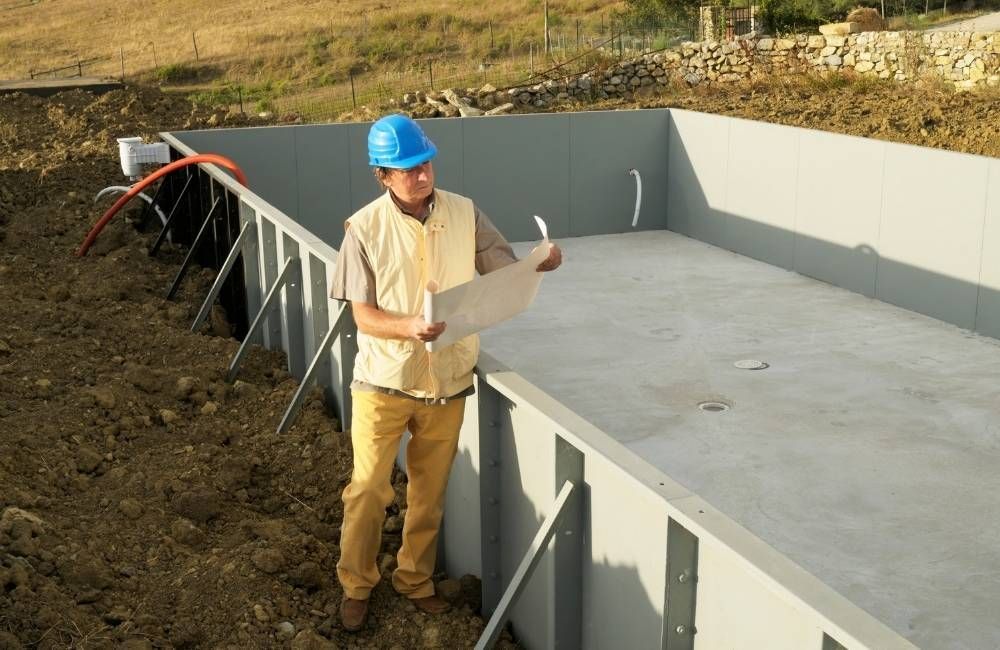
2. Installation Time
Installing a swimming pool isn’t just about how fast the project gets done—it’s also about how quickly a backyard can return to normal. Both vinyl pool liners and fiberglass pools are faster to install than concrete, but one typically holds the edge in terms of speed and convenience.
Fiberglass Pools: Fast and Factory-Made
Fiberglass pools are pre-manufactured and delivered as a single solid shell, which streamlines much of the construction process.
- Quick Shell Placement: The fiberglass pool shell is installed and filled in just a few days in many cases, cutting down significantly on construction time.
- Total Project Timeline: Most complete installations—including excavation, pool placement, plumbing, and decking—are finished within 4 to 6 weeks.
- Minimal On-Site Disruption: Because the pool arrives ready to install, the disruption to the surrounding yard and daily life is kept to a minimum.
- Rare Same-Day Installations: In ideal conditions, some installations have been completed in under 24 hours, although this is not the norm.
Vinyl Pool Liners: Fully Built On-Site
Pools with durable and long-lasting vinyl liners are built directly in the backyard, which adds time to the overall process but allows for more flexibility in design.
- Site-Based Construction: Everything—from digging the hole to installing the liner—is done on-site, meaning more variables can affect the timeline.
- Standard Timeline: Most in-ground vinyl pool liners and above-ground vinyl pool liners are installed in approximately 6 to 8 weeks.
- Weather and Customization Delays: Rain, unexpected ground issues, or custom features can extend the timeline beyond 8 weeks.
- Custom Vinyl Pool Liner Installation: Tailoring the pool shape and size often adds time, but it allows for a personalized design that fits the homeowner’s vision.
Conclusion: Fiberglass Leads in Speed
While both options are significantly faster than concrete pool construction, fiberglass pools are generally the quicker option. Their durable and long-lasting shell and efficient install process make them ideal for homeowners looking for minimal downtime.
3. Interior Surface Texture
A pool's interior surface affects how it feels underfoot and how safe it is to walk on. Both vinyl and fiberglass offer smooth finishes, but they differ slightly in texture and long-term maintenance.
Fiberglass Pools: Sleek With Added Grip
The surface of a fiberglass pool is finished with a material known as gelcoat, which creates a sleek, smooth finish.
- Smooth Touch Finish: Gelcoat feels soft and non-abrasive, making it pleasant for swimming and lounging.
- Slip-Resistant Features: Steps, tanning ledges, and entry points often include a textured grip to reduce slipping while still feeling gentle underfoot.
- Low Maintenance Surface: Gelcoat requires minimal upkeep and retains its smoothness with regular cleaning and care.
Vinyl Pool Liners: Soft and Seam-Based
Durable and long-lasting vinyl liners are also smooth but have a few structural differences that affect texture.
- Silky Feel: The vinyl material offers a soft texture that's easy on bare feet.
- Seams Present: Seams are where vinyl sections are welded together and may be slightly noticeable underfoot.
- High-Quality Vinyl Pool Liners: Opting for premium liners ensures a smoother surface and better seam integration.
Conclusion: Tie
Both fiberglass and vinyl liner pools offer swimmer-friendly surfaces that are smooth and comfortable when properly maintained.
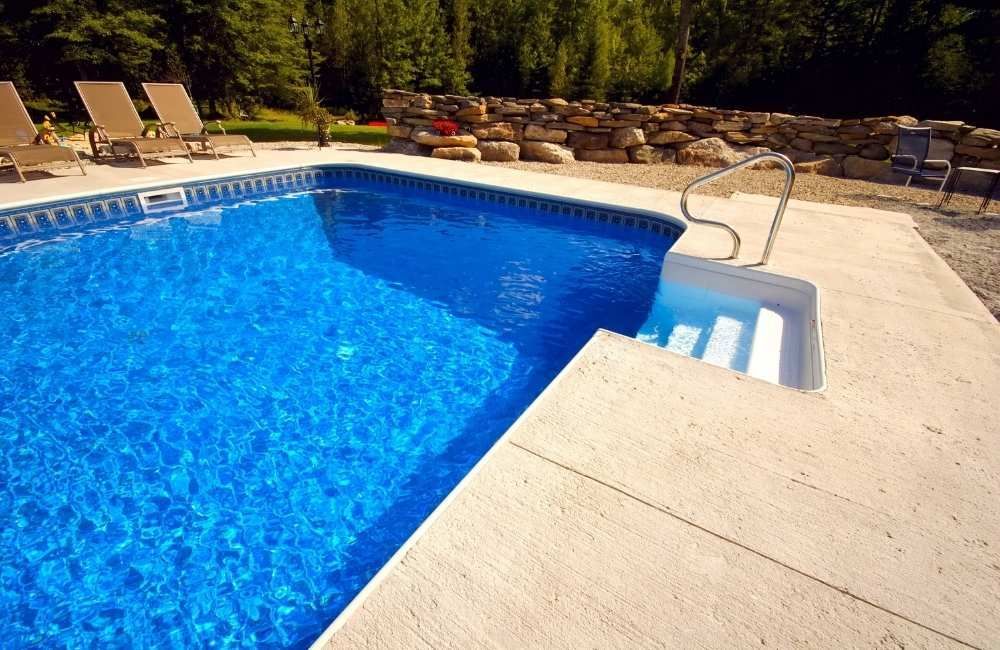
4. Durability
Durability impacts how long a pool lasts and how much effort and cost go into repairs over the years. This is one area where the structural differences between fiberglass and vinyl liner pools really stand out.
Fiberglass Pools: Built to Last
The strength of fiberglass pools lies in their layered construction and protective gelcoat finish.
- Long-Term Finish: When correctly installed and cared for, the gelcoat can last for decades without the need for refinishing.
- Layered Strength: Fiberglass shells are made from multiple layers of material that offer flexibility and resist cracking.
- Low Risk of Damage: Unlike vinyl, fiberglass surfaces don’t tear or get punctured by debris or sharp objects.
Vinyl Pool Liners: More Vulnerable to Wear
In-ground vinyl pool liners and above-ground vinyl pool liners are made from vinyl sheets that typically range from 20 to 30 mils thick.
- Tear Risk: The thin material is susceptible to punctures from things like dog claws, falling branches, or toys.
- Bug Damage: Surprisingly, insects such as ants or termites can chew through the liner. It’s smart to treat the ground before installation and check if the custom vinyl pool liner installation comes with an insect warranty.
- Frequent Replacement: Even with careful use, the liner typically needs replacing due to natural wear.
- Wall Panel Concerns: Behind the liner, metal panels may corrode and rust over time, while polymer panels can become brittle. Choosing updated materials is essential for better long-term results.
Conclusion: Fiberglass Takes the Win
Vinyl pool liners require more frequent maintenance and replacement. Fiberglass, by contrast, delivers strength and long-lasting performance with far less upkeep.
5. Hands-On Maintenance
Routine maintenance is necessary for any pool, but the required level of hands-on care can differ based on the material. Fiberglass and vinyl liner pools each have pros and cons when it comes to upkeep.
Fiberglass Pools: Low Touch, Low Stress
The gelcoat surface on a fiberglass pool is non-reactive and smooth, making water care relatively simple.
- Stable Water Chemistry: Because the surface doesn’t affect pH levels, maintaining water balance and chlorine levels is straightforward.
- Easier Adjustments: Fewer fluctuations in pH and alkalinity mean fewer chemical corrections.
- Time-Saving Routine: Many fiberglass pool owners report spending less time on hands-on care compared to other pool types.
Vinyl Pool Liners: Requires a Bit More Attention
While vinyl pool liners are also easy to work with in terms of water chemistry, the material’s delicacy calls for more diligence.
- Chemistry Similar to Fiberglass: Like fiberglass, vinyl requires balanced water—but its surface is more vulnerable to damage if neglected.
- Tear and Wrinkle Risk: The pliable vinyl material can wrinkle or stretch. While wrinkles are harmless, fixing them takes time and effort.
- Divots and Surface Imperfections: Bumps caused by debris under the liner can be cosmetic or eventually lead to tears. These often require draining the pool for repair.
Conclusion: Fiberglass Has the Edge
While both pool types require regular water testing, fiberglass pools offer lower hands-on demands. Their solid shell resists damage and simplifies ongoing care.
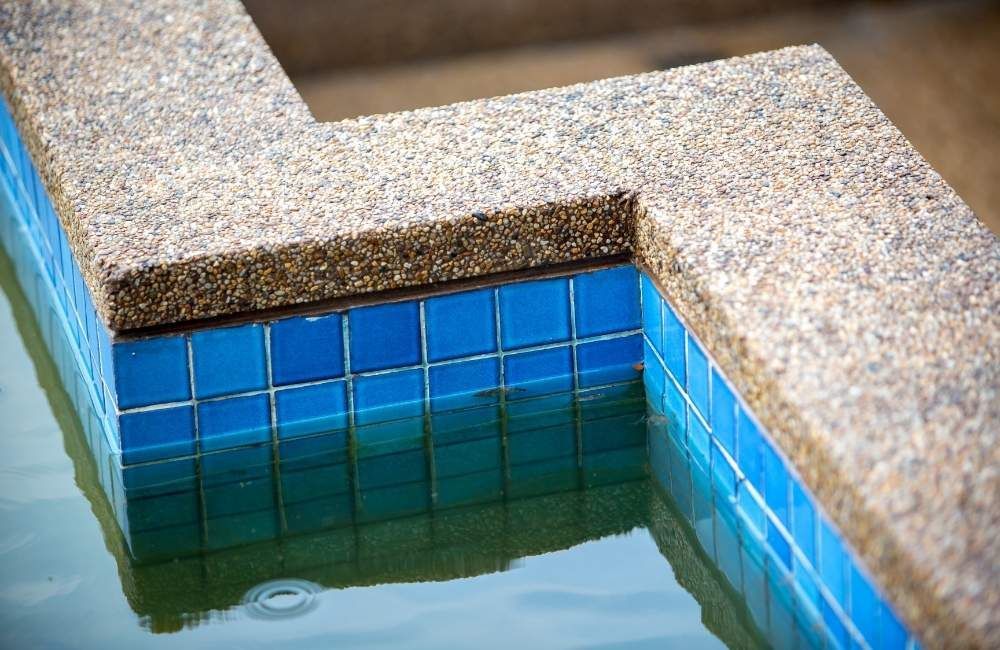
6. Algae Resistance
Algae can develop quickly in poorly maintained pools, but the smoother the surface, the harder it is for algae to attach. Both fiberglass and vinyl liner pools offer protection, though one is slightly more resistant.
Fiberglass Pools: Naturally Algae-Resistant
Fiberglass pools are finished with a smooth gelcoat layer that resists algae buildup.
- Non-Porous Surface: Algae has difficulty attaching to the slick gelcoat.
- Easier Cleaning: Routine brushing and filtration are usually enough to keep the pool algae-free.
- Low Chemical Use: Less algae growth means fewer chemicals needed to prevent outbreaks.
Vinyl Pool Liners: Also Resistant, With One Caveat
Vinyl pool liners offer a relatively smooth surface, which generally resists algae. However, there are a few risk areas.
- Seam Vulnerability: Algae can gather around seams where water circulation may be limited.
- Corners and Steps: These are common areas for low water flow, which may lead to algae growth if not brushed regularly.
- Above-Ground Vinyl Pool Liners: These tend to have more seams than in-ground setups, slightly increasing algae risk.
Conclusion: Fiberglass Wins by a Margin
Though both materials offer better algae resistance than concrete, fiberglass has the advantage thanks to its seamless finish.
7. Chemicals and Energy Use
Running a pool involves more than cleaning—it also requires power and chemicals. Fortunately, both fiberglass and vinyl liner pools offer savings in these areas compared to concrete.
Fiberglass Pools: Efficient and Cost-Friendly
Fiberglass pools operate with notable energy and chemical efficiency.
- Reduced Chemical Needs: Minimal algae and pH fluctuation reduce the need for frequent chemical adjustments.
- Energy-Saving Systems: Many owners use pumps and filters at lower speeds or for shorter cycles, which cuts electricity costs.
- Finish Preservation: The gelcoat finish holds up better with balanced water, extending its lifespan.
Vinyl Pool Liners: Comparable to Fiberglass
In-ground vinyl pool liners and above-ground vinyl pool liners also operate efficiently when well-maintained.
- Chemically Stable: Like fiberglass, vinyl doesn’t need aggressive chemical treatments when chemistry is properly managed.
- Low Energy Requirements: Pump and filter systems on vinyl liner pools are similar in energy use to those used for fiberglass pools.
- Preserving the Surface: Staying on top of water balance helps extend the life of the liner and reduce wear.
Conclusion: Too Close to Call
Both fiberglass and vinyl liner pools are efficient in terms of chemical and power use, offering real savings over time.
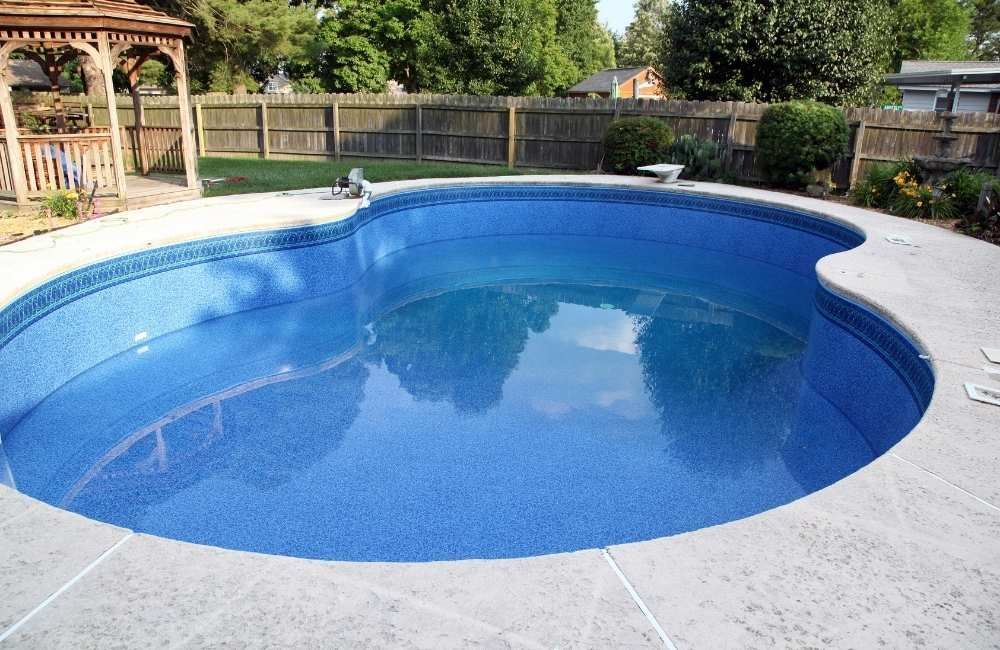
8. Cost Comparison
The
cost of building and maintaining a pool varies widely based on size, customization, materials, and local labor rates. Here's how fiberglass and vinyl pool liners compare when it comes to both initial and long-term investment.
How Much Does a Fiberglass Pool Cost?
Fiberglass pools come with a higher starting price but often make up for it through lower maintenance expenses over time.
- Initial Installation Costs: Most fiberglass pools start around $55,000 and can easily reach $100,000 or more, depending on size, features, and finishing work. A fully completed project with landscaping and accessories typically ranges from $85,000 to $200,000.
- Long-Term Maintenance Costs: Yearly maintenance costs are relatively low, with many owners spending about $1,500 annually if hiring a
professional cleaning service. DIY maintenance can bring this number down significantly, especially with efficient filtration systems.
- Durable and Long-Lasting Investment: Fiberglass pools are known for their longevity, often lasting decades with minimal surface issues. Thanks to their durable and long-lasting shell, they rarely require resurfacing or internal repairs.
- Lower Utility Bills Over Time: Fiberglass pools use fewer chemicals and less energy compared to concrete pools. Energy-efficient equipment and the algae-resistant gelcoat help keep operational costs down.
How Much Does a Vinyl Pool Cost?
Vinyl pool liners are often chosen for their affordability and flexibility in design, though they come with ongoing replacement costs.
- Lower Installation Price: A typical vinyl liner pool ranges from $50,000 to $70,000, with custom upgrades pushing the total toward $90,000 or more. Compared to fiberglass, this usually represents a savings of $10,000 or more at the initial stage.
- Long-Term Replacement Costs: A replacement vinyl liner for an above-ground pool
typically costs between $500 and $900, while in-ground vinyl pool liners range from $1,400 to $2,100, including materials and labor. Factoring in these future expenses is essential for long-term pool budgeting.
- Custom Vinyl Pool Liner Installation: While vinyl liners are affordable, custom designs and premium materials can raise the overall price. Still, the value lies in having a personalized pool tailored to specific needs.
NOTE
Prices are basic estimates. Costs vary by region, pool builder, and market conditions. It’s always best to consult with reputable companies such as
FJV Construction for accurate and up-to-date estimates tailored to your location and design preferences.
Conclusion: Vinyl for Budget, Fiberglass for Long-Term Value
If upfront cost is the primary concern, vinyl pool liners offer significant savings and flexible design. However, fiberglass tends to provide better long-term value with fewer maintenance surprises and a longer-lasting structure.
Frequently Asked Questions
Can a vinyl pool liner be replaced without a pro?
Vinyl liners wear down over time—cracking, fading, or tearing as the material dries out. While hiring a pro is always an option, doing it yourself can save a lot of money, and there are step-by-step resources and kits available to help along the way.
Can chlorine damage a vinyl pool liner?
Yes, using too much chlorine is one of the quickest ways to wear out a vinyl liner. High chlorine levels can weaken the liner’s surface, making it brittle and more prone to fading or cracking, so it’s important to test water regularly and only shock when needed.
What goes under a vinyl pool liner?
Beneath a vinyl pool liner, there’s a carefully prepared base that supports the liner and keeps the pool structure stable. A concrete footing is often poured around the perimeter to hold the pool walls in place, while the floor is typically made from sand, vermiculite, or a concrete mix to create a smooth, level surface for the liner to rest on.
Is it safe to leave a vinyl pool empty?
Leaving a vinyl liner pool empty for too long can cause serious issues. Without water inside, the liner and walls can shift or crack under pressure from the ground, sometimes even causing the pool to lift out of place.
Can a vinyl pool liner be pressure-washed?
Vinyl pool liners aren’t strong enough to handle pressure washing like concrete or plaster pools. Instead, they should be cleaned using safe, non-abrasive tools and approved pool chemicals to avoid tearing or damaging the surface.
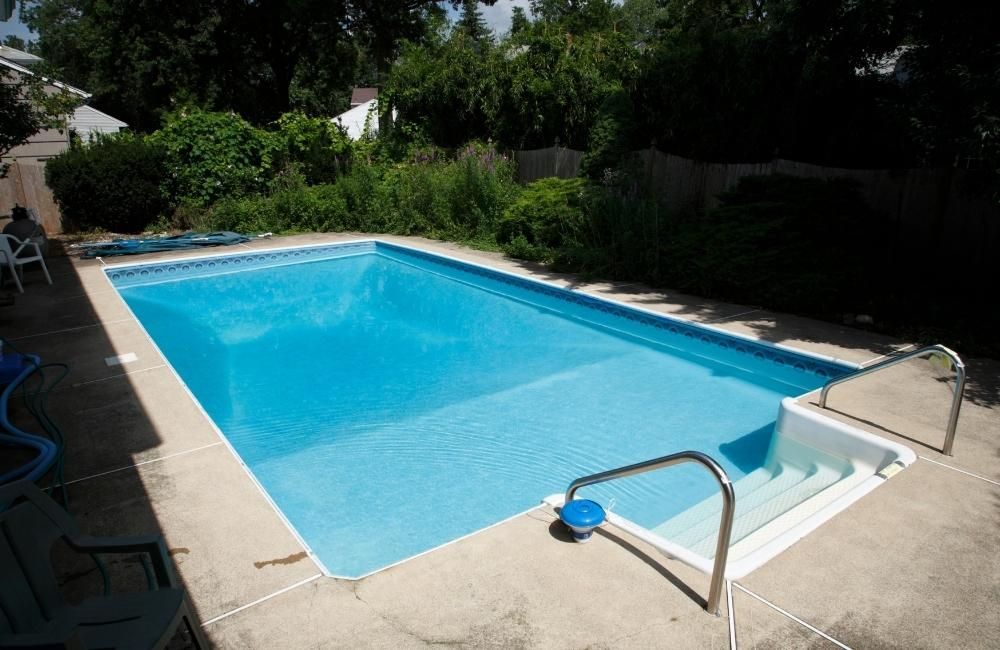
Get Trusted Pool Installations in Danbury, CT!
Need a better look and feel for a backyard pool? FJV Construction installs vinyl pool liners and fiberglass pools built to last, whether it’s for a full replacement or a brand-new setup. From clean, classic designs to custom layouts, every pool is made to fit right and hold up season after season. Locally based and experienced, our team knows what works best for pools in Danbury, CT—and it shows in the results.
Reach out to FJV Construction today to get started.

